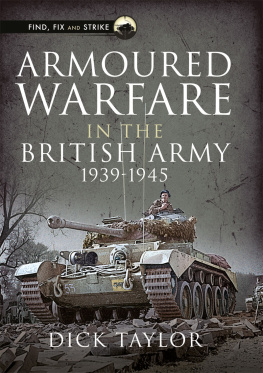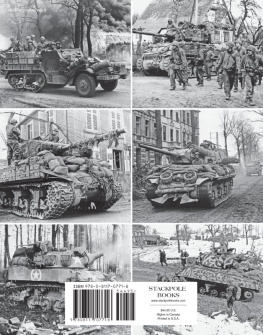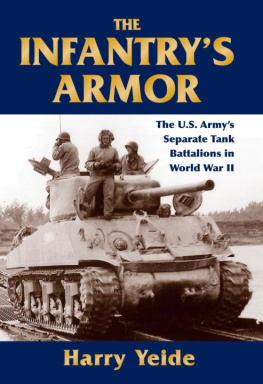NEW VANGUARD 159
STAGHOUND ARMORED CAR 194262
| STEVEN J ZALOGA | ILLUSTRATED BY PETER BULL |
CONTENTS
STAGHOUND ARMORED CAR 194262
INTRODUCTION
The Staghound medium armored car was a rarity among World War II US armored vehicles. It was one of the only American designs that was manufactured exclusively for other armies and never used by the US Army. The Chevrolet T17E1 was originally based on a joint US Armored Force and British requirement. By the time the T17E1 was ready for production, the US Army had ruthlessly restricted its armored car acquisition to a single type, the M8 light armored car. As a result, the Chevrolet M6 medium car never entered US service. However, British forces still saw a need for an armored car in this class and so encouraged serial production of the design, which they called the Staghound. The entire production run except for a handful of pilot models was supplied to Britain.

A column of Staghounds from A Squadron, XII Manitoba Dragoons, moves along a railroad bed in the Hochwald area of Germany on March 2, 1945. Tire chains are in use for traction in mud and the Staghounds have the usual Canadian bins added to the side in place of the auxiliary fuel drums. (NAC Jack Smith PA 144144)
The last significant armored car developed by the US Army prior to World War II was the archaic T11 developed by the Four Wheel Drive Auto Company in 193436. Six of the original T11s and six of the T11E1s were manufactured in 193435. Only this single pilot of the final T11E2 was completed, which incorporated a new turret. No serial production was authorized due to weak suspension and poor engine cooling. (NARA)
By the time the Staghound arrived in service in early 1944, battlefield conditions had changed. The vehicle was designed for long-range desert reconnaissance missions, but British and Commonwealth armored-car regiments were now knee-deep in the mud of the Italian winter. Although a dependable and robust vehicle, the Staghound was also large and cumbersome on Italys poor mountain roads. The Staghound fared better once the Italian campaign turned mobile in the summer of 1944. The vehicle was also widely used in North-West Europe starting in the summer of 1944, seeing service primarily in the headquarters of armored-car regiments. Its most extensive use was by Canadian regiments. The Staghound was durable and dependable enough that it remained in service after World War II. Many were cascaded down to NATO allies such as the Netherlands, Italy and Denmark, while others were exported to the countries in the Middle East. They saw combat use in several Middle Eastern wars, and remained in Lebanese service well into the 1980s. The Staghound continued to pop up in unexpected places around the globe, including Cuba during the revolution of the 1950s, and in Nicaragua during the civil war of the 1980s.
DEVELOPMENT
Origins
At the time that the US Army formed the Armored Force in the summer of 1940 in response to the shocking defeat of France, one of the technical lessons from the campaign was the German use of wheeled armored cars for reconnaissance. At the time, the US Army was in the process of acquiring the M3A1 scout car for its mechanized cavalry force. The M3A1 was essentially a lightly armored truck with no overhead armored protection. There was some debate regarding the ideal reconnaissance vehicle, with options mooted including light armored cars, medium armored cars and light tanks. The pre-war cavalry had used both armored cars and light tanks, the latter called combat cars. The advantages of armored cars over tanks were that the former were faster on roads and quieter, which was helpful when scouting. Armored cars also tended to be more reliable and require less maintenance than tracked vehicles. On the negative side, armored cars had restricted mobility in cross-country travel, especially in adverse environmental conditions such as in deep mud or snow. This was an inevitable consequence of having wheeled suspension, since the footprint of their tires was inevitably much heavier than the wider and longer footprint of a tracked vehicle. Light tanks were attractive due to their better mobility in all conditions and the fact that their chassis permitted the use of better armored protection and heavier firepower. On the other hand, tracked vehicles were noisy, consumed more fuel, and required more daily maintenance attention than armored cars. To some extent, the choice was linked to tactics. If the reconnaissance doctrine stressed the need to fight for intelligence, a more robust vehicle such as a light tank was better suited to the role. If the tactics placed more stress on stealth and speed, armored cars were a better choice. In 194041, the Armored Force had not made up its mind about tactics or technology indeed, the debate has continued up to the present day. As a result, the US Army in 1941 was willing to sponsor the development of both armored cars and light tanks until such time as these tactical issues were settled.
Besides the Armored Force, two other combat arms had some interest in future armored reconnaissance vehicles. The Tank Destroyer Center had a standing requirement for a fast scout vehicle, since a central element of the new tank-destroyer tactics was to put out a screen of reconnaissance troops in front of the tank-destroyer companies to locate any approaching enemy force. There was some debate whether such troops should use a light unarmored vehicle such as a Jeep, or a light armored car. The rump of the cavalry force was also in the process of organizing mechanized cavalry squadrons which would serve both as organic divisional scout troops as well as corps- and army-level scout formations. Light tanks and armored cars were being examined as options for these formations as well. As a result of these related tactical requirements, the Ordnance Department began development work on three categories of armored car in 1941: light, medium, and heavy. These differed primarily in the amount of armor protection rather than the level of firepower, as all initially used the 37mm tank gun as their principal weapon.

The Trackless Tank is seen here during its demonstration for the Armored Force Board on March 19,1941. The performance of this medium armored car was promising enough to initiate the development of medium armored cars for the US Army. (Patton Museum)
To further complicate matters, British military representatives in the United States were active in encouraging the development of armored vehicles by the US Ordnance Department that would suit British army requirements. The North African desert campaign was in full swing, and the British purchasing agents were especially interested in armored cars. The inventory of armored cars available to the British Eighth Army in early 1941 was motley and far from ideal. Many of these vehicles consisted of commercial automobile or light truck chassis with light armored bodies. They were not especially durable, their armament was not impressive, and they offered only minimal armored protection. While newer types were in the process of being delivered, there was still a desperate need for modern armored cars. The desert fighting put a premium on armored cars not only for traditional scouting missions, but also for a wide range of mechanized-cavalry missions including flank security and raiding. Under these demanding conditions, range and durability were major requirements.

![Bull Peter Staghound armored car, 1942-62 [electronic resource]](/uploads/posts/book/169241/thumbs/bull-peter-staghound-armored-car-1942-62.jpg)















